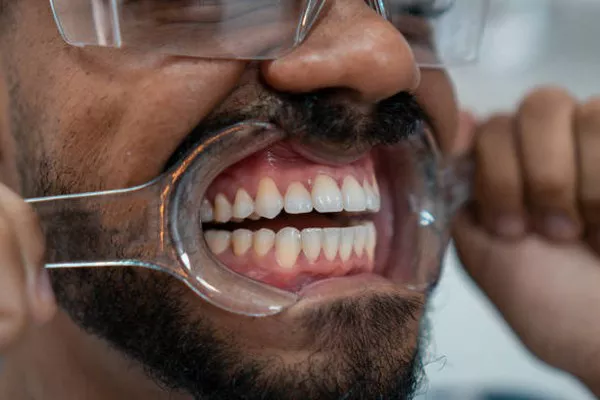In the pursuit of a brighter, whiter smile, many individuals turn to teeth whitening products, and among them, white strips have gained immense popularity. However, the burning question lingers: do these seemingly harmless white strips harbor the potential to cause damage to your precious pearly whites? In this comprehensive exploration, we delve into the intricacies of white strips and their impact on dental health.
Understanding White Strips and Dental Damage:
White strips, commonly used for at-home teeth whitening, contain a peroxide-based gel that penetrates tooth enamel to break down stains. While these strips are celebrated for their effectiveness in brightening smiles, concerns arise regarding their impact on dental health.
1.1 Peroxide Concentration and Tooth Sensitivity:
One key factor to consider is the concentration of peroxide in the whitening gel. Higher concentrations may lead to increased tooth sensitivity. According to a study published in the Journal of Dental Research, whitening strips with lower peroxide concentrations were associated with a lower incidence of tooth sensitivity, emphasizing the importance of choosing the right product.
1.2 Enamel Erosion Risks:
Research from the American Journal of Dentistry suggests that prolonged and frequent use of teeth whitening products, including strips, may contribute to enamel erosion. It is essential to strike a balance between achieving a whiter smile and preserving the protective layer of enamel that shields your teeth.
Weighing the Pros and Cons of Tooth Whitening Strips:
Like any dental procedure, using white strips has its pros and cons. Understanding these factors is crucial in making an informed decision about incorporating whitening strips into your oral care routine.
2.1 Pros of White Strips:
– Convenient at-home use
– Cost-effective compared to professional treatments
– Visible results within a relatively short time frame
2.2 Cons of White Strips:
– Potential for tooth sensitivity
– Risk of enamel erosion with prolonged use
– Uneven whitening results in some cases
Ensuring the Safety of Teeth Whitening Products:
While concerns about dental damage exist, adhering to safety guidelines can mitigate potential risks associated with using teeth whitening products, including white strips.
3.1 Follow Usage Instructions:
Manufacturers provide specific instructions for using whitening strips. Deviating from these guidelines can increase the risk of adverse effects. A study in the International Journal of Dentistry emphasizes the importance of strict adherence to recommended usage.
3.2 Consultation with Dental Professionals:
Seeking guidance from a dental professional before starting a whitening regimen is paramount. Dentists can assess your oral health and recommend suitable products based on individual needs.
Dental Health Precautions for Teeth Whitening:
Beyond using white strips responsibly, incorporating additional oral care practices can help safeguard your dental health throughout the whitening process.
4.1 Maintaining Regular Oral Hygiene:
Brushing and flossing regularly are essential to prevent plaque buildup, which can hinder the effectiveness of whitening products. A study in the Journal of Clinical Dentistry highlights the importance of maintaining good oral hygiene practices during whitening treatments.
4.2 Choosing Products Wisely:
Selecting reputable whitening products and avoiding over-the-counter options without proper approval is crucial. Products approved by dental associations are generally considered safer for use.
Expert Opinions on Teeth Whitening Safety:
Seeking insights from dental professionals sheds light on the safety of teeth whitening methods, including the use of white strips.
5.1 American Dental Association (ADA) Recommendations:
The ADA emphasizes the importance of consulting with a dentist before using any teeth whitening products. Their stance underscores the need for personalized guidance to ensure a safe and effective whitening experience.
5.2 Dentist Insights on Frequency and Duration:
According to Dr. Sarah Thompson, a practicing dentist, moderation is key when using whitening strips. She recommends using them intermittently rather than consistently to minimize the risk of dental damage.
In conclusion, the use of white strips for teeth whitening is a common practice, but it is not without potential risks. Understanding the nuances of these risks, weighing the pros and cons, and following expert advice and safety guidelines are essential steps in achieving a brighter smile while preserving your dental health.
Related Links:
Do whitening strips work after one use?
What not to Do after using whitening strips?
How much to bleach teeth at dentist?





























